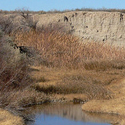Obama Style Stimulus
By Stephen Lendman
Lying Obama in the den of fellow liars, speechifying about jobs. Expect further transfers of the people's wealth to the top, and no improvement of the economy anywhere.
Obama’s leadership is defined by lawlessness, serial lying and betrayal of the public trust.
For ordinary Americans, his new proposal amounts to a combination left hook, right cross haymaker, decking workers when they need uplifting.
His September 8 “American Jobs Act” address to Congress, in fact, demonstrated his contempt for working households and their ability to see through another thinly veiled wealth transfer scheme to corporate favorites and super-rich elites already with too much.
In a word, it was more same old, same old – a disgraceful laundry list of handouts instead of measures to create jobs, stimulate growth, reinvigorate Main Street, strengthen America’s middle class, and help growing millions of impoverished, disadvantaged households most in need.
None of that was anywhere in sight nor will political Washington agree to it.
No matter. On September 8, New York Times writer Mark Landler headlined, “Obama Challenges Congress on Job Plan,” saying:
“….Obama challenged lawmakers on Thursday to ‘pass this jobs bill’ – a blunt call….to enact his $447 billion package of tax cuts and new government spending, designed to revive a stalling economy and his own political standing.”
Fact check
Tax cuts never create jobs, especially ones for the rich. The Bush 2001 ones, extended in 2006, and again by Obama in 2010 didn’t increase investments or employment.
If extended or increased now, they’ll continue the decades long historic income shift from middle and working class households to corporate favorites and America’s super-rich.
That’s the crux of Obama’s plan along with deeper austerity cuts, burdening ordinary Americans with the onus of paying for what should be earmarked for them.
Nonetheless, Obama told Congress to “pass this jobs plan right away….The question is whether, in the face of an ongoing national crisis (created by him, Bush and previous administrations), we can stop the political circus and actually do something to help the economy (read its top 1% only).”
Omitting details, he insisted that everything he proposes will be paid for by increased austerity, including entitlement and Medicaid cuts, harming America’s retired, disabled and poor, getting nothing back in return.
Some plan! Yet Obama insisted he’s “pretty sure (he) know(s) what most Americans would choose. It’s not even close….we can help. We can make a difference. There are steps we can take right now to improve people’s lives.”
In fact, most everything he proposed will exacerbate today’s crisis, not alleviate it for working households.
A same day Times editorial headlined, “The Jobs Speech,” saying:
Obama’s proposal was more “ambitious….robust and far-reaching than expected – that may be the first crucial step in reigniting the economy….”
“(H)e was authoritative in demanding that Congress pass his plan quickly….We hope Mr. Obama keeps his promise to take his proposals all over the country. The need to act is urgent.”
Fact check
Only the last statement was worthy in an editorial best rebuked for not explaining who benefits at whose expense.
Economist Jack Rasmus, a Progressive Radio News Hour regular, did it well, headlining his analysis of Obama’s proposal “Why Less is More of the Same,” saying:
Obama’s “Jobs Act” was another weak-kneed combination of inadequate spending, “wrong composition and targets, and bad timing.”
In fact, no matter how it’s directed, $447 billion “won’t achieve the job creation it claims.” It’s more of the same too little, too late “for an economy in as deep an economic hole as it is, and (one) facing growing downward momentum at home in the context of a global economy also rapidly sinking.”
In February 2009, when Obama proposed $787 Bn in economic stimulus, unemployment was about 25 million. Two and a half years later, it’s the same. How then can half a loaf do now what double it earlier couldn’t. It won’t nor is that its intention, what America’s media won’t explain.
In fact, it’s more a reelection than jobs creation plan if voters are dumb enough to buy it. Hopefully they’ll understand how it harms them.
Moreover, Obama’s current plan is “seriously deficient” as was his 2009 proposal. Both featured non-job creating tax cuts. “Then and now, tax cuts simply cannot and will not create jobs,” especially given the depth of America’s troubles. Yet tax cuts comprise 60% of his plan.
Despite well over $1 trillion in tax cuts in the last two years, zero jobs were created – in fact, less than zero when factoring in the replacement of full-time higher-paying jobs for uncertain lower wage/low or no benefit temporary or part-time ones.
George Bush’s jobless recovery is a case in point. From 2001 – 2004, around $3 trillion in tax cuts were largely comprised of capital gains, dividends, estate tax relief, business depreciation, and other corporate handouts.
Over 80% went to America’s wealthiest 20%. In fact, most of it went to the top 5% and 1%, America’s most disadvantaged nearly entirely left out.
As a result, “(w)e had the longest jobless recession in US history up to that point. It took 46 months just to recover” to 2001 levels. Moreover, most jobs created were in finance and housing when speculative excess helped them boom.
At the same time, millions of high pay/good benefit manufacturing jobs were lost, offshored to low wage economies where they remained.
Besides ineffective tax cuts, Obama also proposed state subsidies as in 2009 to create jobs. In fact, since then, hundreds of thousands of state and local government layoffs followed, continuing monthly.
In 2009, $100 billion was allocated for infrastructure spending to create four million jobs. It didn’t happen. In June 2009, 6.4 construction workers were employed. Today it’s less than 5.5 million.
Obama’s new plan is no better. Immediate job creation is needed. Construction and infrastructure ones are long-term and won’t help over any duration when boosted by minimal funding.
His plan to subsidize small business hiring is also flawed. Besides minimal government help, bank loans are needed at a time their availability have declined for “15 consecutive months.”
Washington’s too-big-to fail bailout didn’t restart lending. Like big corporations hoarding $2 trillion, so are major banks in cash reserves they’ve used for speculation, not credit to stimulate economic growth and create jobs.
An effective plan would let small business, responsible for most job creation, borrow directly from the federal government at near zero percent interest like major banks do from the Fed they own so effectively get free money.
After House Republicans massage Obama’s plan they’ll likely cherry-pick business tax cuts they like best and add more, leaving working households worse off than before because deeper austerity cuts coming will pay for them as well as America’s imperial wars.
As a result, Rasmus appropriately renamed Obama’s plan “The Business Tax Expansion Act of 2011.” Republicans love its selected parts. So do Democrats by going along, especially with 2012 priorities in mind to be reelected by making core constituencies believe harming them is helpful.
Today’s political Washington doesn’t prioritize job creation and economic growth, just the illusion they’re promoted when, in fact, shifting America’s wealth to its most well-off comes first, along with letting working households bear the burden of paying taxes corporate favorites and super-rich elites avoid.
That’s the America Obama wants continued and intensified to entirely destroy America’s middle class – that is, what’s left of it.
A Final Comment
Last year, Congress declared a destructive payroll tax holiday for workers by cutting the rate from 6.2% to 4.2% for one year. Doing so, in fact, drained hundreds of billions from the Social Security Trust Fund.
As a result, it was irreparably weakened in its ability to pay future benefits. The idea, in fact, is to destroy the program altogether, perhaps first by privatizing it.
It’s easy to cut taxes, hard to restore them, especially when economic conditions are weak. Maintaining the lower rates indefinitely will cause massive benefit cuts before eliminating them altogether.
When the original Social Security Act passed in 1935, Franklin Roosevelt pledged the following:
“We put those pay roll contributions there so as to give the contributors a legal, moral, and political right to collect their pensions and their unemployment benefits. With those taxes in there, no damn politician can ever scrap my social security program. Those taxes aren’t a matter of economics, they’re straight politics.”
FDR never met Obama or congressional Republicans and Democrats. What he gave, they’ll end, violating a government-mandated right.
A payroll tax holiday is another step toward privatization. It’s a sure way to kill it, the way 401(k)s destroyed private pensions, leaving workers at the mercy of marketplace uncertainties able to wipe out life savings during hard times.
Nonetheless, Obama proposed more of the same. By so doing, he’ll exacerbate a bad idea by reducing the current 4.2% to 3.1% in 2012 and giving employers the same benefit and more.
For them, he also proposed a complete tax holiday for new hires as well as on wage increases for current staff. In addition, his plan includes tax cuts for hiring the long-term unemployed and veterans out of work six months or more.
Expect the usual pundits and “experts” to hail the idea as an effective way to create jobs when, in fact, Obama’s entire plan may end up destroying them along with irreparably weakening Social Security.
A payroll tax holiday or cut any time is a bad idea, besides doing nothing to create jobs. What’s needed, in fact, wasn’t proposed by either Bush, Obama or Congress.
It requires large amounts of stimulus spending for economic growth. If effectively directed, it can sustain it inflation free the way colonial America did for 25 years before British banks co-opted their money creation power.
So did Lincoln with government created money, turning America into the world’s greatest industrial giant by launching the steel industry, a continental railroad system, a new era of farm machinery and cheap tools, as well as much more.
In fact, America’s post-Civil War years were its greatest growth period before the Fed’s 1913 creation, giving bankers money power only governments should have.
Taking it back, of course, is key to sustained long-term prosperity. At this time, other steps in the right direction are compromised as long as Wall Street controls the nation’s money.
It also controls government. Unless that changes, expect political Washington to keep shifting the nation’s wealth from those who need it most to corporate favorites and others already with too much.
As a result, America’s epitaph one day may read it’s how an economic/military powerhouse hollowed out in disrepair, long surpassed by other industrial giants that understood good policies and instituted them.
Under Obama’s plan and others like it, it’s not only assured, it’s accelerating.
Stephen Lendman lives in Chicago and can be reached at lendmanstephen@sbcglobal.net.
Also visit his blog site at sjlendman.blogspot.com and listen to cutting-edge discussions with distinguished guests on the Progressive Radio News Hour on the Progressive Radio Network Thursdays at 10AM US Central time and Saturdays and Sundays at noon. All programs are archived for easy listening.
http://www.progressiveradionetwork.com/the-progressive-news-hour/.
¶
IMPORTANT ANNOUNCEMENTS
Notice to our audience: All comments suspended until further notice due to spamming and defamation/harassment threats. Check Facebook’s Links for the Wild Left for comment threads on our articles.
ADVERT PRO NOBIS
________________________________________________________________________________________________________
IF YOU THINK THE LAMESTREAM MEDIA ARE A DISGRACE AND A HUGE OBSTACLE
to real change in America why haven’t you sent at least a few dollars to The Greanville Post (or a similar anti-corporate citizen’s media?). Think about it. Without educating and organizing our ranks our cause is DOA. That’s why our new citizens’ media need your support. Send your badly needed check to “TGP, P.O. Box 1028, Brewster, NY 10509-1028.” Make checks out to “P. Greanville/ TGP”. (A contribution of any amount can also be made via Paypal and MC or VISA.)
THANK YOU.
____________________________________________________________________________________________________
VISIT OUR STORE FOR THIS AND MORE POLITICAL EXPRESSION PRODUCTS.
CLICK ANYWHERE ON THE IMAGE ABOVE







TomARanker_125.jpg)
GlenTepke_125.jpg)

RobinSilver_125.jpg)










